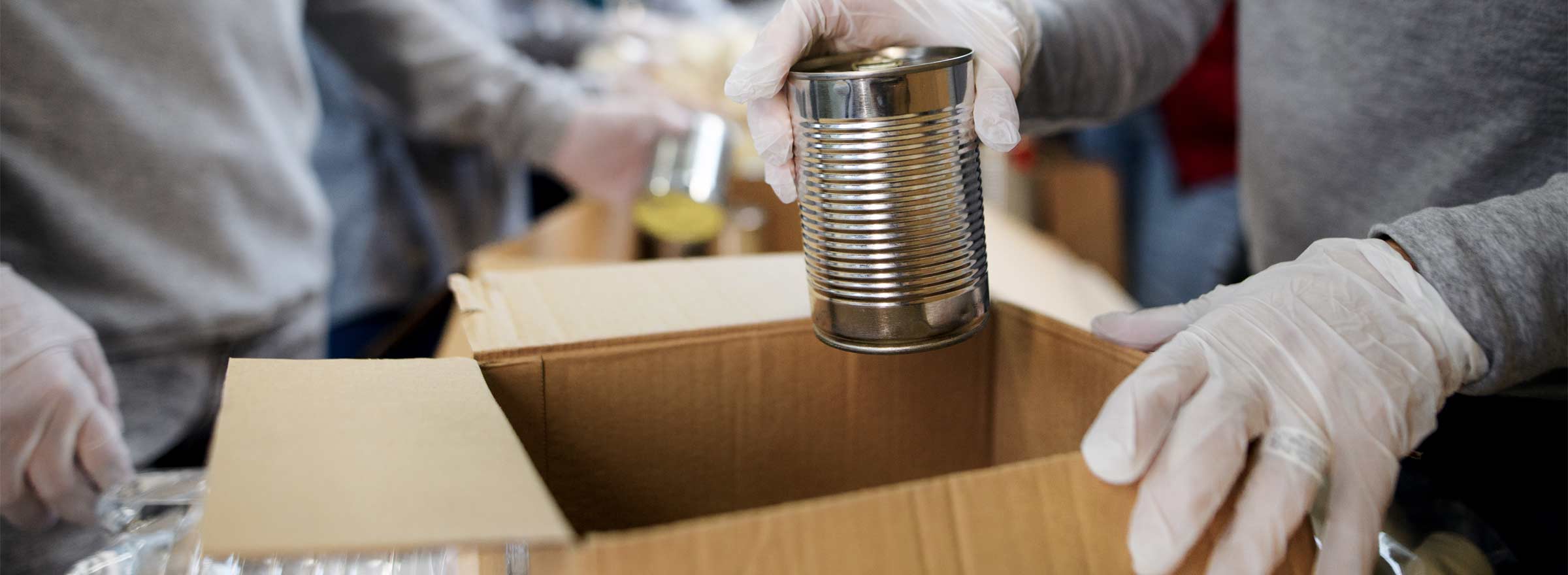There is enough food on our planet to feed everyone. Despite this, around 821 million people are "chronically undernourished" according to the UN, and that number is on the rise as COVID cases and restrictions continue to impact our communities around the world.
This persistent and seemingly solvable problem is why our team at TechSoup is dedicated to better understanding the needs of nonprofits working in food security. We are learning about what they need most when it comes to technology for supporting their missions. We are using a variety of methodologies, from individual interviews to focus groups, and both qualitative and quantitative analysis. The goal? To identify, promote, and design the solutions these organizations need most to serve more.
We want to share with you what we learned from these conversations and how we plan to use this information moving forward.

Five Big Takeaways
We've interviewed over 60 food security organizations — and surveyed even more — to get a clear picture of the challenges they face. Here are the top five things we learned.
1. The majority provide food security via food pantries and food banks, but the landscape is changing with the pandemic.
Over 80 percent of the food security organizations we came across classify themselves as food pantries, food banks, and food rescue groups. The other 20 percent consisted of hunger advocacy organizations, farming, and nutrition education.
However, after one of our surveys came back, we realized we didn't include a prepared meal provider category for organizations such as soup kitchens and Meals on Wheels. And it's very likely even more organizations were left out and did not fit neatly into one the classification categories listed.
We're continuing to learn about the many different shapes food security organizations take within communities. This is especially true since the financial strain brought on by the pandemic has resulted in more people struggling to provide food for themselves. While traditional hunger relief organizations like food banks and pantries amplified their services, churches, neighborhood associations, and others have had to make food distribution a central part of their work.
Long-term recovery and policy changes will likely continue this trend and impact the future of the fight against food insecurity. This is why it's important to ensure that these organizations are represented. When we can better identify the nuanced challenges that exist, we're more equipped to design collaborative solutions. We need solutions that can keep up with the changing demands of organizations that feed their communities during disasters and other emergency situations.
2. Most organizations are volunteer-driven and are run by small teams of staff without a dedicated IT resource.
More than 70 percent of the organizations we spoke to have fewer than 10 people on staff. They are largely dependent on volunteers to help with the sorting, delivering, preparing, and serving of food — among other jobs.
Unsurprisingly, this results in staff members having to wear many hats. Specialized tech decisions are often made by senior leaders who may not have the best skills and tools to efficiently run their digital operations.
"For me, technology is a huge issue," said one food bank executive director working with a staff of two. "I don't speak tech, and I've tried to improve that in a lot of ways, including taking courses, and it helped, but the hardest part is there's no comprehensive solution. So we end up being reactive instead of proactive."
Being understaffed, stretched, and preoccupied with immediate day-to-day needs means that longer-term issues like document management, data strategy, technology upgrades, and other digital needs can easily fall by the wayside. While most of the people we spoke to noted that planning for the future and investing in specialized technology is important to them, having the time and energy to focus on it is a challenge.
3. Messy document management systems slow down service delivery.
Managing food inventory and delivery orders, not to mention client information, creates a lot of paperwork that hunger relief organizations of all sizes struggle to maintain. As one food bank pantry volunteer told us, "We share files, but it's not living where it's all supposed to be. We're constantly sharing things back and forth, and it needs to be in one place."
We heard how organizations strive to create and maintain a searchable, secure, and centralized system of files but often get stuck on figuring out which technology and tools are right for them. They may have tried one solution but had to patch it together with other tools to fit evolving needs. Or, as is often the case, there's no one person in the organization responsible for researching which technology can best serve their needs. As a result, new tools are adopted haphazardly as a short-term fix rather than incorporated into a long-term operational strategy.
Many staff members and volunteers expressed frustration with sporadic management systems for accessing, updating, and sharing important information, whether it's done digitally or dependent on paper. But as a couple of interviewees told us, it's more than just a nuisance — it's a limitation.
"If we could speed up the client intake process — we could serve more people in a day than we serve now," said one interviewee.
A food pantry coordinator shared similar sentiments while managing client information from a cardboard index box. "It's kind of a pain," he said. "Allergies, addresses, phone numbers — all of that is kept in an index card in a box that is alphabetized. It's all a lot of paperwork that we deal with on the phone, and it slows down our process."
4. Lack of staff time and expertise is a top barrier to adoption of digital tools.
While organizations understand that investing in technology can bring value to the work they do, there is a gap in resources to incorporate it into daily operations.
In a separate global data survey (PDF) we conducted with nearly 12,000 civil society organizations around the world, at least half of them cited the greatest hurdle for solving tech challenges as a lack of staff time, expertise, or both.
About 78 percent of these organizations said they rarely or never hosted staff trainings on digital tools. This finding was consistent with our food security research. When we dug into specific reasons, we heard that it had lower priority because it competed with more immediate day-to-day needs — like stepping in on the front lines when volunteers didn't show up.
5. Organizations want to connect with others working in food security to share successes and challenges.
The staff and volunteers working at hunger relief organizations we spoke to are by and large passionate about the work they do. They care about making a difference in their communities, even when facing innumerable challenges.
Expressed in various ways, we heard a resounding desire to connect with other organizations that are in a similar position and to learn from those who have stories of success.
One food bank employee said they depend on other organizations as a sounding board when making decisions. She looks to forums and other community outlets to discuss successes and challenges. Another employee said they'd like to see what Excel spreadsheets other food pantries use for data collection and share some of their own favorite templates.
These findings reinforced our vision to create a platform based on relationships and resource sharing between organizations where community feedback is embedded at every level. That platform is Quad, a peer-to-peer community addressing the world’s most pressing issues. Starting with a food security focus, this is a space where you can connect with others in your mission area and share challenges, solutions, tools, and more.
A Note on Our Methodology
Caravan Studios, a division of TechSoup, developed the methodology that we've used in our research. Caravan Studios is built around ideas in participatory action research, community-driven design principles, design thinking, and systems thinking.
We've been using a variety of methods to better understand the people doing this important work. We have conducted one-on-one interviews, landscape analyses, surveys, focus groups, virtual events, deep listening through social media, and more. The goal has been to build better digital solutions to meet the specific challenges these workers face.
Our Next Steps
We greatly value the insights we’ve gained from this research. We have used these findings to inform the development of Quad, our new community platform. We’re also developing specialized solutions, content, and virtual events designed specifically for food security organizations. Stay tuned to find out more!
By joining Quad, you’ll get access to a whole new range of resources — most importantly, the opportunity to build relationships with others in your field. You’ll also get guides, reports, product comparisons, and other great resources, as well as unique access to reduced admin fees and dedicated support.
Additional Resources
- How Three Organizations Are Using Link2Feed to Fight Hunger
- Even More Apps to Address Food Insecurity in 2021
- How One App Saved Over 40 Million Pounds of Food from the Landfill
- How Range Is Addressing Food Insecurity During COVID-19
Top photo: Shutterstock








